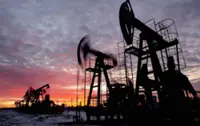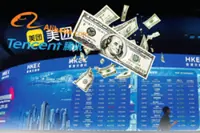Rare earths are critical minerals used in everything from semiconductors and green technology to the defence industry. - Reuters
HYPOCRISY, it’s said, is the tribute that vice pays to virtue.
The US government’s meltdown about rare earths similarly shows how an administration determined to halt the energy transition knows it’s already lost the argument.
Rare earth magnets are the super-strong pellets that help stick a charging cable to your laptop, smartwatch or headphones.
They’re also an essential component in a swath of high-tech applications. About 90% are produced in China.
That gives powerful leverage. Export curbs imposed by Beijing in April have been a key sticking point in discussions over unwinding tit-for-tat tariffs between the United States and China.
A call between President Donald Trump and President Xi Jinping to get talks back on track was “having to do mostly with rare earth magnets and some other things,” according to Trump.
Automakers have warned of factory shutdowns in a matter of weeks if the restrictions aren’t lifted.
To hear the administration talk, this is all about national security.
Rare earths and other critical minerals are “key building blocks of our defence industrial base,” the White House said in April.
The magnets are used in plenty of advanced weaponry, thanks to their ability to power ultra-efficient, lightweight motors.
The F-35 Lightning aircraft contains 408kg of rare earths, while a Virginia class submarine has 10 times that amount.
Smaller amounts crop up in Tomahawk cruise missiles, Predator drones, and JDAM smart bombs.
The US military doesn’t account for a very significant slice of demand, however.
The exact amount is a secret, but it’s unlikely to be much more (and may well be much less) than 3,000 tonnes a year – fewer than 1% of global consumption.
The vast majority goes instead to clean power, where the magnets help run electric vehicles (EVs) which use them in their motors and wind farms which need them for their gearboxes.
If the Pentagon wants an onshore supply chain to meet its rare earths needs, it’s going to have to piggy-back off the far larger civilian market being fueled by the energy transition.
For all it has been derided since the 2024 election, former President Joe Biden’s signature climate law recognised this.
The Inflation Reduction Act or IRA, contained billions of funding to establish factories producing everything from EVs, to batteries, to critical components and raw materials usable in both commercial and military settings.
At this very moment, US$439mil of loans and grants to rare earths projects from the Department of Defence since the start of 2020 are starting to bear fruit.
The Mountain Pass rare earths mine southwest of Las Vegas, owned by MP Materials Corp, now refines about half of the 45,000 tonnes it produces each year on-site, rather than in China.
An MP-owned facility due to open in Fort Worth within months will use these compounds to produce 1,000 tonnes per year of rare earth magnets – the first such mine-to-magnets supply chain ever built entirely in the United States.
In Sumter, North Carolina, e-VAC, owned by Houston-based private equity fund Ara Partners, is building a separate plant to make another 1,600 tonnes a year of non-China magnets, with production due to start in the fall.
On their own, these two factories could probably supply the US military’s needs. More are under way elsewhere.
The trading arm of South Korean steelmaker Posco Holdings Inc struck a deal in March to provide rare earths mined in Utah to a planned US factory making as much as 5,000 tonnes from as soon as 2026.
In Estonia and Germany, European companies are looking to build another 9,000 tonnes.
Most of this activity depends on manufacturers switching to clean energy, who are in turn counting on low-cost finance provided by the United States and other governments.
Main customer
General Motors Co is the main customer of both MP Materials and e-VAC. Arafura Rare Earths Ltd, which is developing a mine in the Australian outback, has signed agreements with wind turbine manufacturers Siemens Gamesa Renewable Energy SA and GE Vernova Inc.
Support for this was once a bipartisan matter. The initial spark was a law signed by Trump himself in 2018, ordering the military to remove all Chinese-sourced magnets from its supply chains by 2027.
The United States should now be on the brink of hitting that target.
There’s just one snag. While Trump is pleading with Xi to give the United States access to more rare earths, his allies in Congress are doing their best to eviscerate the IRA, cancelling billions of funding for clean energy to support his tax cut plans.
The outcome of that may push much of this nascent supply chain into bankruptcy, once again leaving GE and Detroit dependent on the whims of a trade official in Beijing.
Myopic mismanagement
It’s a blatant act of economic and geopolitical self-harm to match Washington’s myopic mismanagement of the country’s solar sector a decade ago.
By pretending a clean energy revolution isn’t underway and scouring the globe for the materials it needs, Trump is ensuring that critical minerals supply chains become even more concentrated in the secure investment environment offered by China.
The IRA’s attempt to bring production of clean tech onshore was an insurance policy against a more chaotic and contested geopolitical environment.
In smothering that industry in the cradle, Trump is ensuring that in future trade disputes with Beijing, America will find itself in the role not of equal, but supplicant. — Bloomberg
David Fickling is Bloomberg Opinion columnist covering climate change and energy. The views expressed here are the writer’s own.





